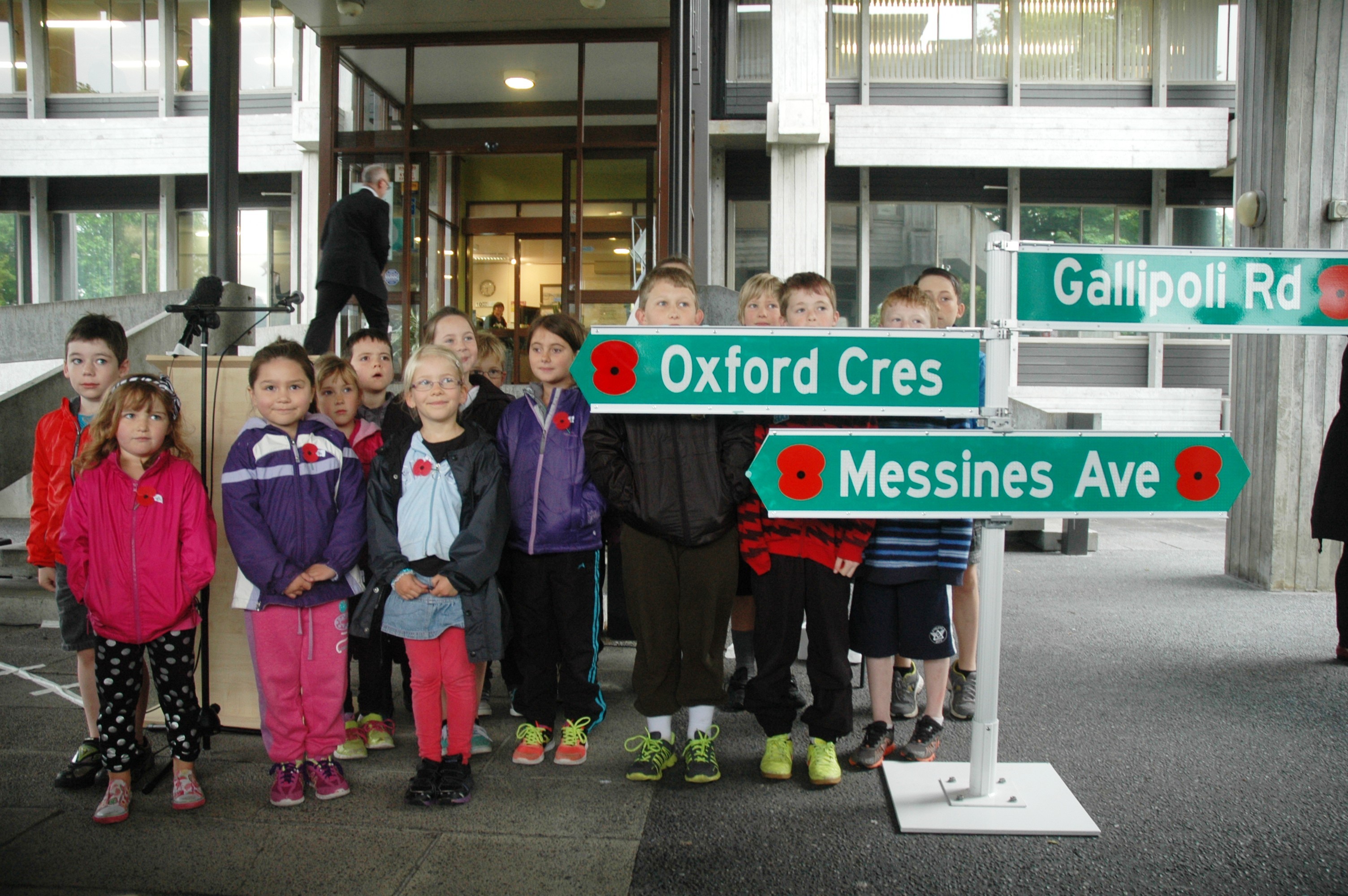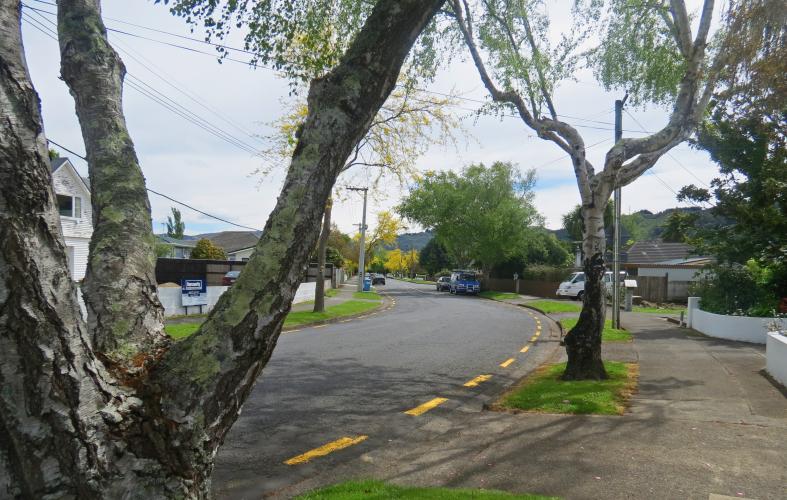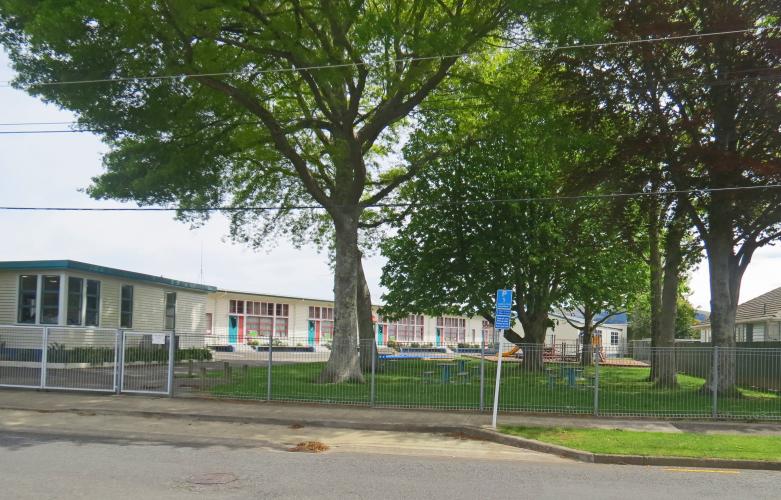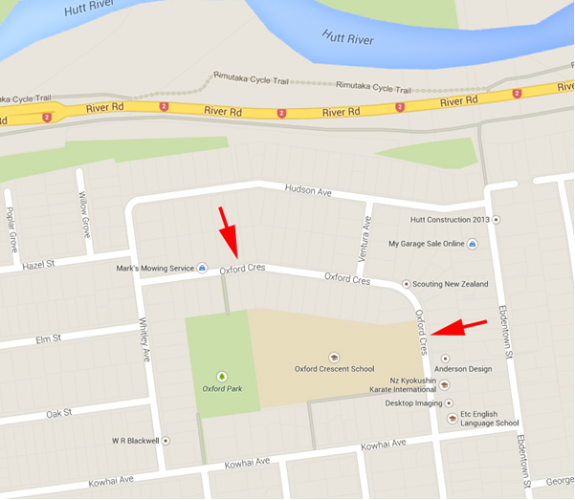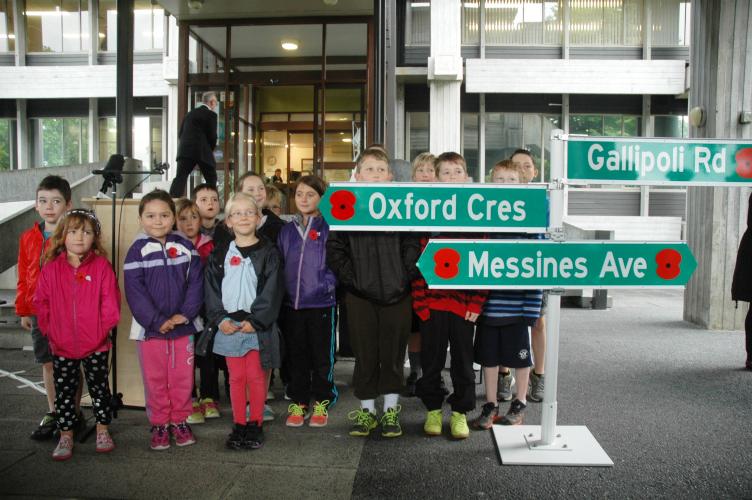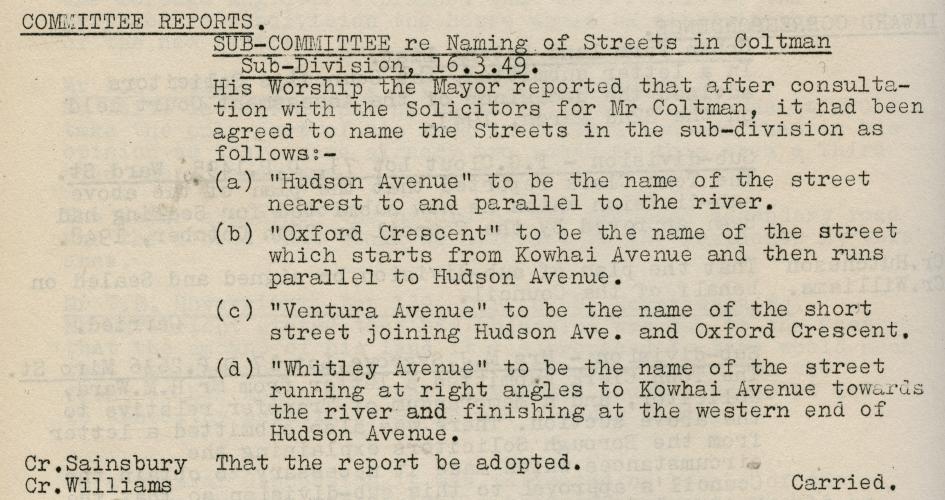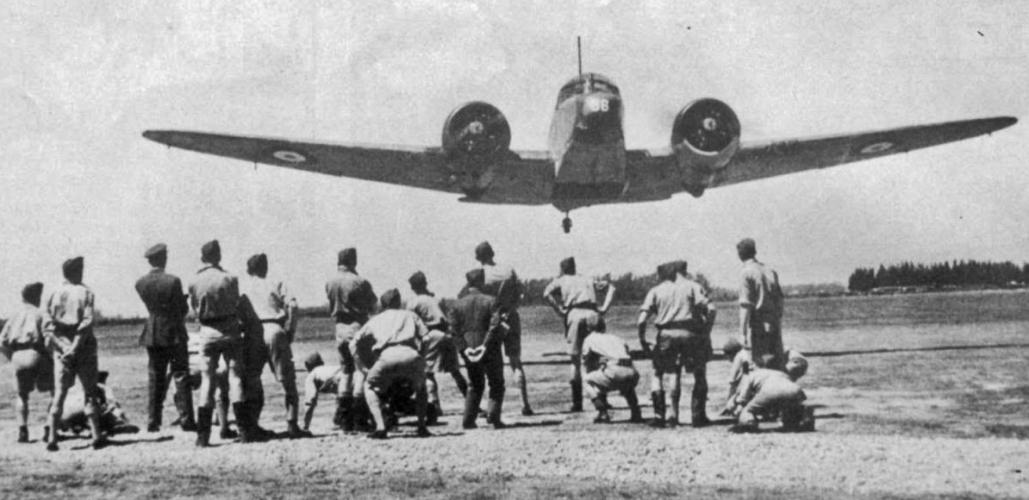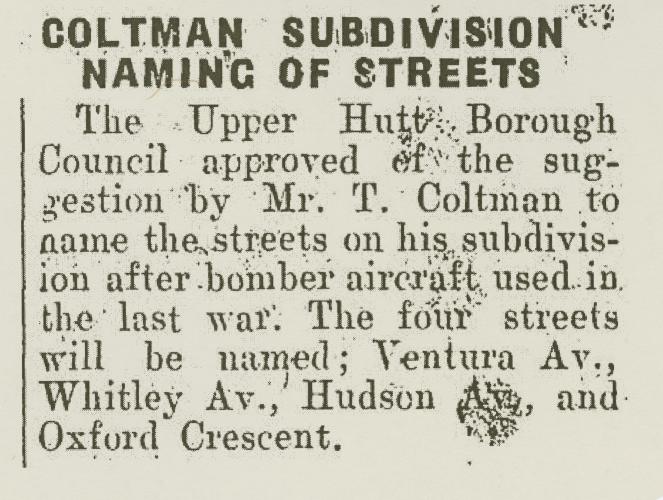003 Oxford Crescent Upper Hutt looking toward the Ventura intersection
Reason for the name
Oxford Crescent is named after the Airspeed Oxford, a trainer aircraft used by the RNZAF to train New Zealand aircrew during the Second World War. It is one of four streets created as part of a 1949 subdivision whose names memorialised aircraft New Zealanders had served in during World War 2.
The land on which Oxford Crescent was built had previously been farmland. It was owned by Tom Coltman, proprietor of the Grand Hotel in Wellington. Coltman decided to subdivide his property into eighth-of-an-acre sections to be sold off by Upper Hutt estate agent Arthur Birkett. According to Birkett’s son, Barhan, Tom Coltman wished for the new roads planned as part of this development to be named after WWII aircraft.1 This was to honour his son Jim’s service with the RNZAF during the War. Military records for Flight Officer James Coltman show that he had personal experience flying at least three of the four aircraft after which these streets were named.
Upper Hutt Borough Council records indicate that in early 1949 the Council set up a sub-committee to oversee the formal process of approving street names for the Coltman subdivision. At the March 16th meeting of this sub-committee the Mayor, E. W. Nicolaus, reported that he had met with solicitors for Mr Coltman and they had conveyed to him their client’s wish for the new streets to be named “after types of bomber aircraft”. A motion was then passed recommending “that His Worship the Mayor be authorised to arrange for the naming of the streets in accordance with the latter suggestion.”3 This decision was subsequently ratified at a full Borough Council meeting on April 20th and publicly announced in the April 28th edition of the Upper Hutt Leader
Author: Reid Perkins Archivist UHCC reid.perkins@UHCC.govt.nz
About the Airspeed Oxford
While it never flew any combat missions the Airspeed Oxford is widely recognized as having made a major contribution to the Allied cause during World War II. This was due to its use as a training craft and, in particular, the pivotal role it played in the British Commonwealth Air Training Plan, which supplied trained military aircrew from New Zealand, Australia, Canada and South Africa to serve within or alongside the RAF.
Airspeed Ltd was founded in 1931 by the aeronautical engineer N. S. Norway (Norway was later to move on to a highly successful career as a novelist, writing under his first two names as Neville Shute). The first plane he designed for his company was the Airspeed Envoy, a civilian twin-engine, eight-passenger craft with retractable undercarriage. This design proved popular and easily adaptable to military use as well. The RAF chose it as the basis for a modified version to be built to their specifications that could serve as one of their main trainer planes. The new plane, named the Oxford after Oxford University (it was RAF practice to give its trainers names with educational associations), had its first flight in June 1937.
Nicknamed the “Oxbox” by the men who flew it, the Oxford was capable of providing advanced training for every position in an aircrew, from pilots, navigators, and radio operators to gunners, bomb-aimers and flight engineers. It could also be used for other tasks such as reconnaissance and surveying. The RNZAF placed its first order for five Oxfords in 1937 but substantially increased this number after the establishment of the British Commonwealth Air Training Plan in 1937. At the height of the War there were over 100 Oxfords based at the South Island’s Wigram Airbase alone. Most RNZAF aircrew trained on Oxfords went on to serve with the RAF in Europe and Africa; others served in the Pacific alongside U.S. forces.
About Oxford Crescent
Oxford Crescent is small tree-lined residential street that is classified as a local road within the Upper Hutt City Council District plan. Created in 1949 as part of a new subdivision it was settled largely by young families during the post-War baby boom.1 Given the origins of Oxford Crescent’s name and those of the surrounding streets it seems fitting that many of these were families of ex-servicemen. The establishment of Oxford Crescent School in 1953 reflected the young families demographics of the area. Along with Oxford Park the school remains one of the street’s most distinctive features.


